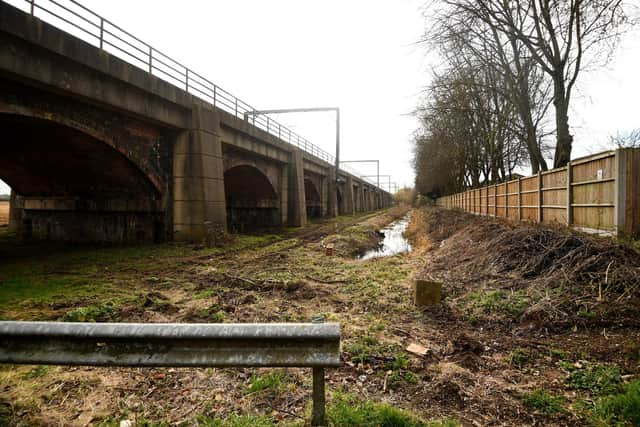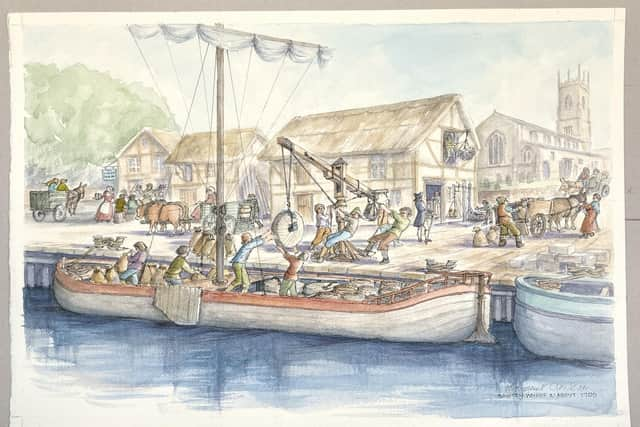Bawtry Wharf: Yorkshire market town finally gets signage marking spot of ancient river port which vanished from the landscape in the 19th century
Bawtry Wharf was at its peak in around 1700, but gradually lost trade once a major coaching road and then a railway were built linking the town to Doncaster and London.
The port on the River Idle was centuries-old, but silted up once the Great Northern Railway diverted it and built a viaduct over the land in 1857, and by the early 20th century it had vanished from maps and was barely visible in the landscape. It once handled goods and vessels that had come from European cities via the Trent and Humber.
Advertisement
Hide AdAdvertisement
Hide AdThe Bawtry Heritage Group are keen to commemorate the lost port, believing that very little information about its history is available to both residents of and visitors to Bawtry since old road signs referencing the ‘12th-century port’ were removed.


A local artist, Margaret Clarkson, has painted a scene of activity at the pool where the vessels berthed, and it will now be displayed in St Nicholas Church’s grounds, close to where the port once was.
David Kirkham from the group said: “We decided to do something about this lack of ‘visible’ history - so we commissioned a painting of the wharf, with the intention of displaying it in a heritage lectern near the site and on our website.
"The wharf was at its peak around 1700, and the painting shows what it was probably like at this time. What is shown in the painting is historically accurate - the barges, ox and mule carts, the crane, a warehouse with a ‘taking-in’ door at its first floor, the scales, an excise man. A millstone is being loaded - these were carted from Derbyshire to Bawtry Wharf for many years.
Advertisement
Hide AdAdvertisement
Hide Ad“Margaret and I did make one exception to only including in the picture material that is historically accurate. Given the wharf's captive population of workers - stevedores, carters, bargemen etc - we guessed there would have been a small inn in the corner of one of the warehouses. The ‘Wharf Tavern’ therefore appears on the left. We don't actually know if there was anything like that there - but I'm guessing there was.


“I'm delighted with Margaret's work. It will bring to vivid life a vitally important but barely visible aspect of Bawtry's history.
“St Nicholas Church is shown on the painting. This will enable people to work out exactly where the wharf was - they can stand next to the graveyard wall, turn around, and see the site where a small housing development now sits. I've asked the Vicar of St Nicholas for permission to site the lectern in the corner of the graveyard, readily visible over the wall. Putting it there will give it some protection.”
Bawtry Wharf history
The Idle was the original source of Bawtry’s prosperity, and many of the Georgian townhouses that still exist today were built by merchants who made their fortunes from the port. It was open for business as early as the 12th century, though it could have begun as a Roman trading post.
Advertisement
Hide AdAdvertisement
Hide AdThe port’s downfall was swift and brutal – though it was already suffering from competition from canal and railway traffic, the Great Northern Railway’s decision in the late 1850s to build the stone viaduct meant the river had to be re-routed into a straight cut 300 metres from the ‘pool’ where the vessels had unloaded. Cut off, the area gradually silted up and the new course bypassed the town. Its last appearance on a map was in 1899, though it was mentioned in writings from 1905.
Bawtry Heritage Group has also submitted a proposal for Doncaster Council to list the site as a Local Heritage Asset to give it additional protection from development.
The only visible reminder of its presence is a warehouse on Wharf Street.
